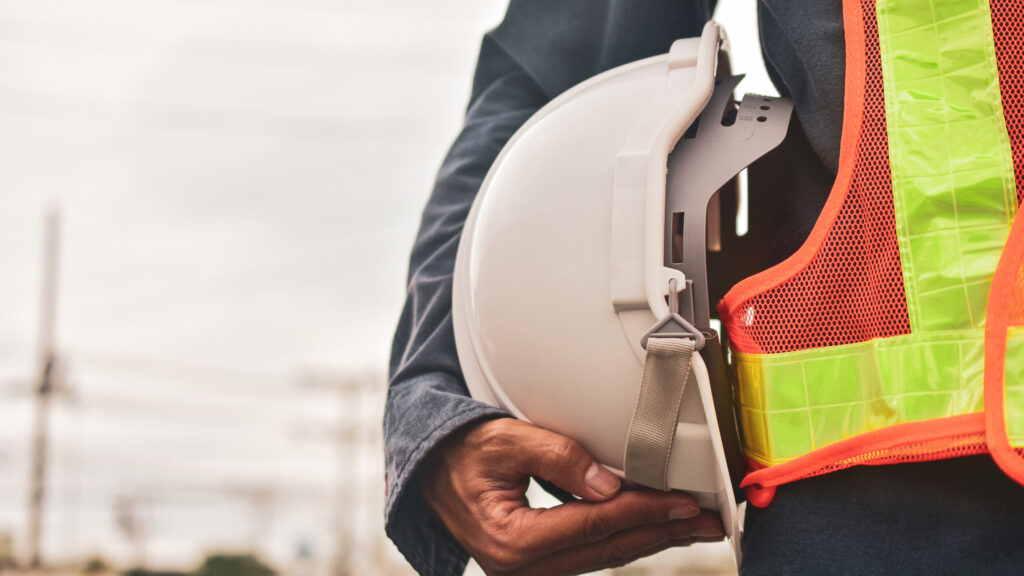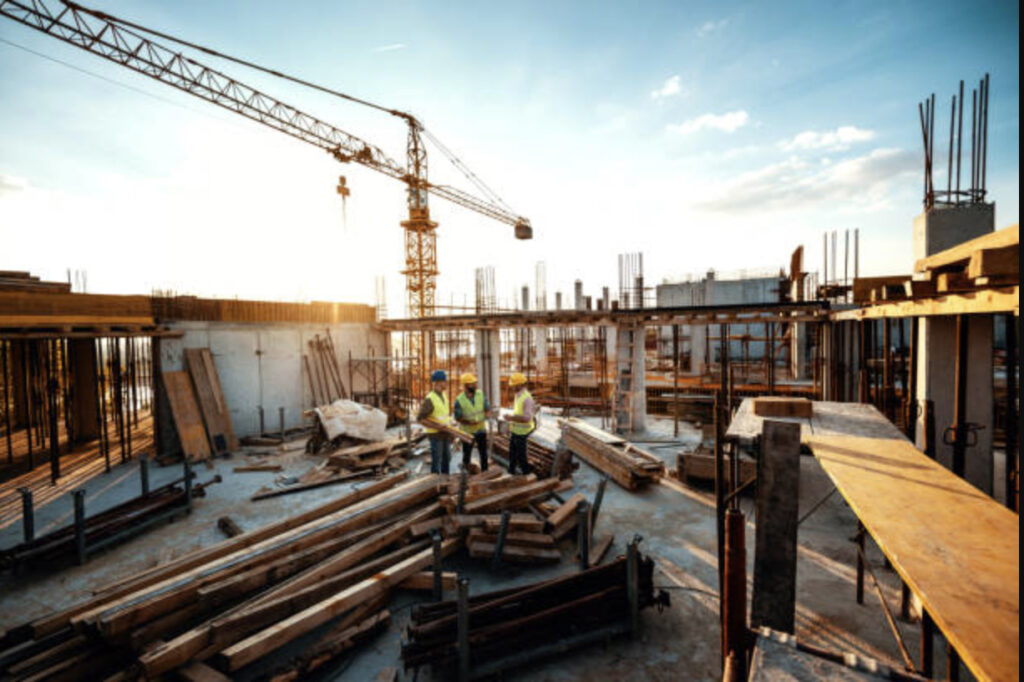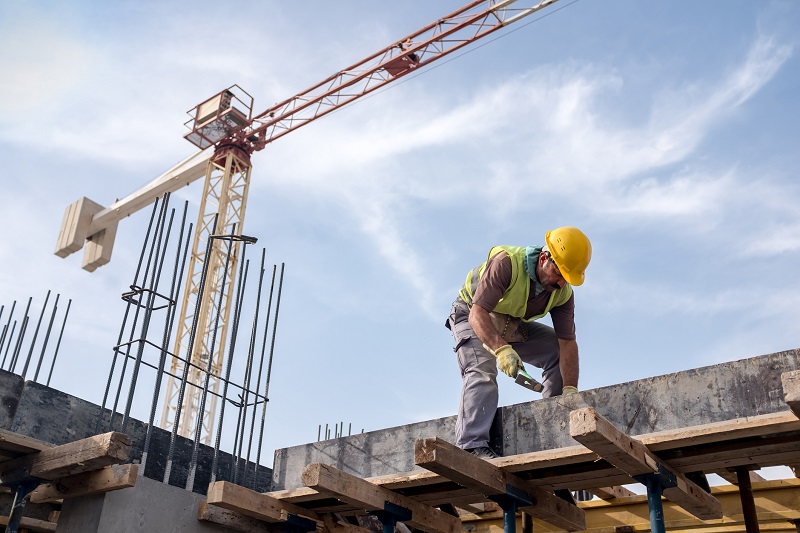According to the NSC 2020 Safety Technology in the Workplace Survey, 48 percent of workers reported exposure to heavy equipment operation, and 30 percent said that operating heavy equipment caused or contributed to a serious workplace injury. Many accidents and injuries in the heavy equipment operations sector can be avoided by increasing worker visibility. That’s where high-visibility workwear comes in.
Understanding High-Visibility Workwear: What Is It?
Put simply, high-visibility workwear or high-visibility clothing makes it easier for workers — including heavy equipment operators — to be seen while on the job site.
High-visibility clothing typically consists of at least one of these two components:
- Fluorescent colors: Fluorescent colors have been created using special, brighter-than-average pigments, which reflect invisible UV light and are easily visible even in low light conditions, including dusk, dawn, and cloudy days. These colors also contrast strongly against both natural and manmade backgrounds, allowing for increased visibility.
- Reflective elements: Reflective elements, such as strips or tape, reflect light back to where it comes from. These materials are most effective in dark lighting.
The Importance of High-Visibility Workwear in Heavy Equipment Operations

High-visibility clothing, a key category of Personal Protective Equipment (PPE), is beneficial to workers in various fields, underscoring PPE’s crucial role in workplace safety, particularly for those who operate heavy equipment. Here are some of the greatest advantages this gear provides:
Reduced Accident Risk
The primary benefit of wearing high-visibility clothing when operating heavy equipment is a reduced accident risk. The more visible both operators and those working around them are, the less likely they are to get hurt or be the cause of accidents.
Protection During Intense Weather, Late Nights, and Early Mornings
For those who operate heavy equipment outdoors — such as construction workers — high-visibility clothing is especially beneficial during intense weather, such as rain or snow. It also provides additional protection for those working late at night or early in the morning, ensuring they can be seen by other workers, drivers, etc.
Easier Visibility During Emergencies
In the event that something goes wrong on the job site, it’s critical that project managers and other leaders can easily spot all workers and account for them. When everyone wears the same clothing — particularly if that clothing is highly visible — that process becomes much less challenging.
Ensures OSHA Compliance
The Occupational Safety and Health Administration (OSHA) has specific regulations in place for certain workers, including construction workers operating equipment on highways, stating that they must wear high-visibility clothing. Providing access to this gear for all employees, including heavy equipment operators, ensures that everyone is OSHA-compliant.
Choosing the Right High-Visibility Gear for Different Environments

Heavy equipment operation takes place in a variety of environments, from warehouses to construction sites. Here are some of the most important factors to consider when choosing high-visibility personal protective equipment for your team:
Visibility from All Angles
Workers must be visible from all angles, especially when they’re working outdoors and need to be seen by both other workers and people driving by. The clothing should feature reflective elements on the front, back, and sides to ensure maximum visibility.
Time of Day
For workers who regularly operate equipment early in the morning or late in the evening, reflective elements are also helpful because they’re most effective in dark lighting. Fluorescent colors help as well, but the reflective strips or tape typically make the biggest difference.
Material
Most high-visibility clothing is made of nylon or another lightweight material. These fabrics allow for greater comfort and mobility, making it easier for workers to consistently wear their clothing throughout their entire shift. However, if workers regularly work with or around sharp objects, they may want clothing made from a thicker and more durable fabric.
Challenges and Solutions in Implementing High-Visibility Workwear
Most employees are fairly open to the idea of donning high-visibility workwear — they want to stay safe on the job, after all. Some people are more resistant, though.
The following are some potential challenges to keep in mind when introducing and implementing high-visibility workwear, with tips on overcoming them:
- Challenge: Employee resistance. Those who aren’t used to wearing high-visibility workwear and layering another piece of clothing over their existing uniforms may be resistant to the idea of adding a new garment.
- Solution: Education and training. The more people know about the benefits of high-visibility clothing and how it can protect them on the job, the more inclined they will likely be to wear it.
- Challenge: Enforcement and compliance. People might accept the idea of wearing high-visibility clothing, but they might struggle with consistently wearing it and abiding by new workplace rules.
- Solution: Positive reinforcement goes a long way. Recognize those who are consistently wearing their protective gear and let them know that you appreciate their effort. Establish specific disciplinary measures (and follow through with them) for those who don’t stick to the rules, too.
- Challenge: Cost and accessibility. Some employers might worry about the cost of providing high-visibility personal protective gear for all employees. If employees are expected to provide their own clothing, they might also resist the idea of having to buy something new.
- Solution: If possible, employers should provide at least one piece of high-visibility workwear for all employees. Comparing prices from multiple manufacturers will help them find the best deal, and they may also get discounts from buying clothing in bulk.
Future Trends: Innovations in Safety Gear for Heavy Equipment Operations
High-visibility clothing is easily one of the best and most effective innovations for heavy equipment operators. However, many other technological developments are influencing the industry, including the following:
- Smartwatches: Smartwatches can alert employees and employers to potential health and safety risks, such as falls, elevated heart rate, etc.
- Smart boots: Smart boots can track wearers’ locations and detect potential falls, shocks, and other hazards.
- Smart helmets: Smart helmets are similar to smartwatches in that they track vital signs and can monitor location. They may be more practical for some than watches, too.
- Smart vests: Smart vests aren’t just highly visible, but they can also monitor vital signs and biometrics to pick up on potential issues, such as signs of heat stroke.
Conclusion
Integrating high-visibility workwear is critical for those in the heavy equipment operation field. Those who have not already adopted this gear can benefit greatly from following the guidelines shared above and incorporating it into their workplace policies.
Learn more: All Seasons Uniforms



 Copyright 2017-2023 All rights reserved.
Copyright 2017-2023 All rights reserved.